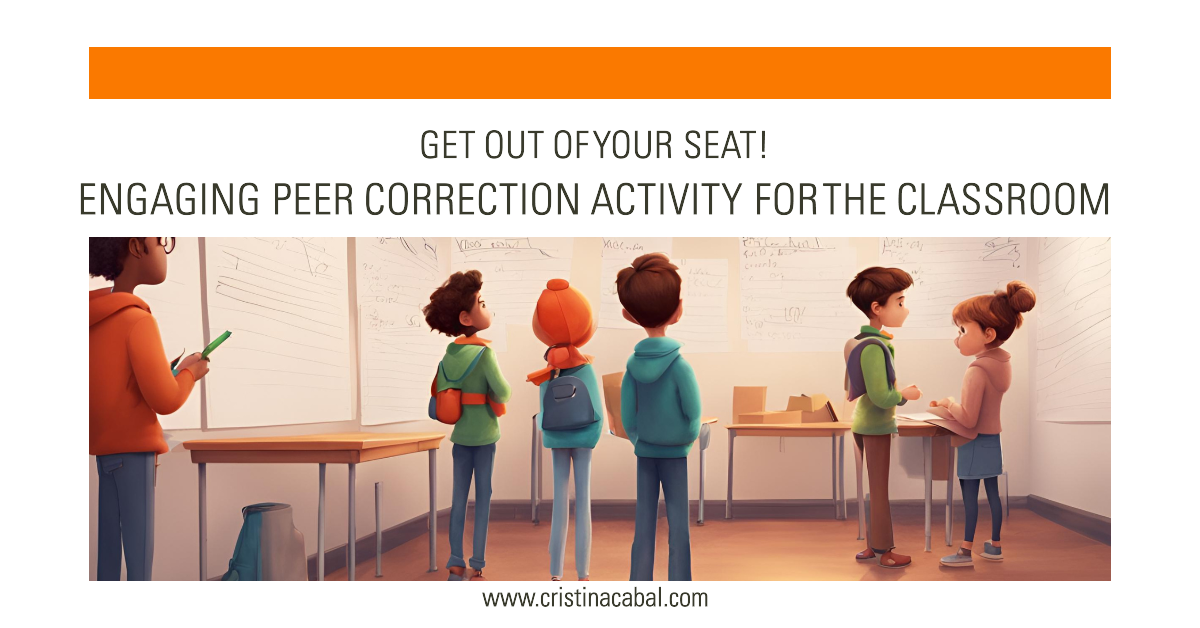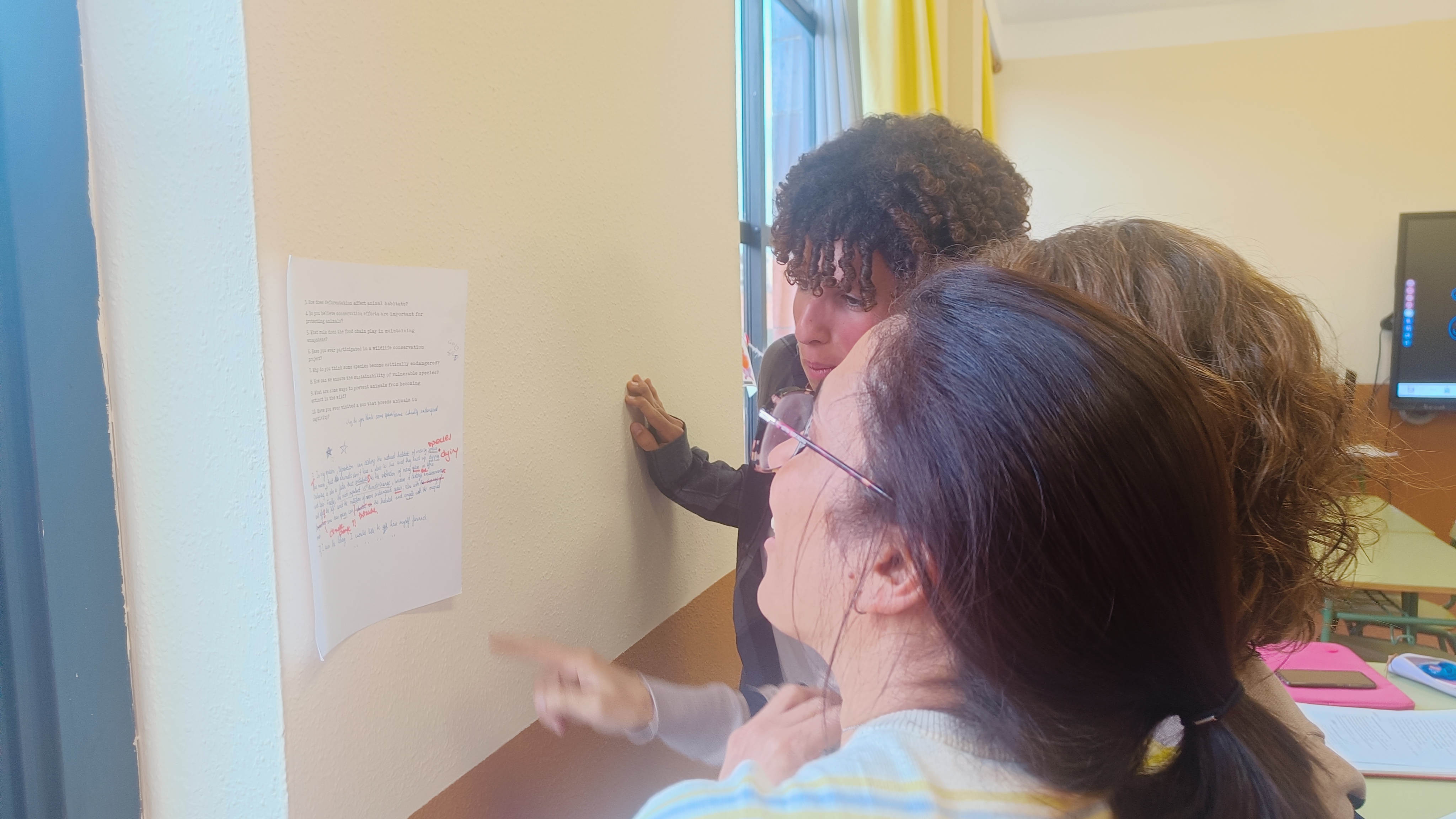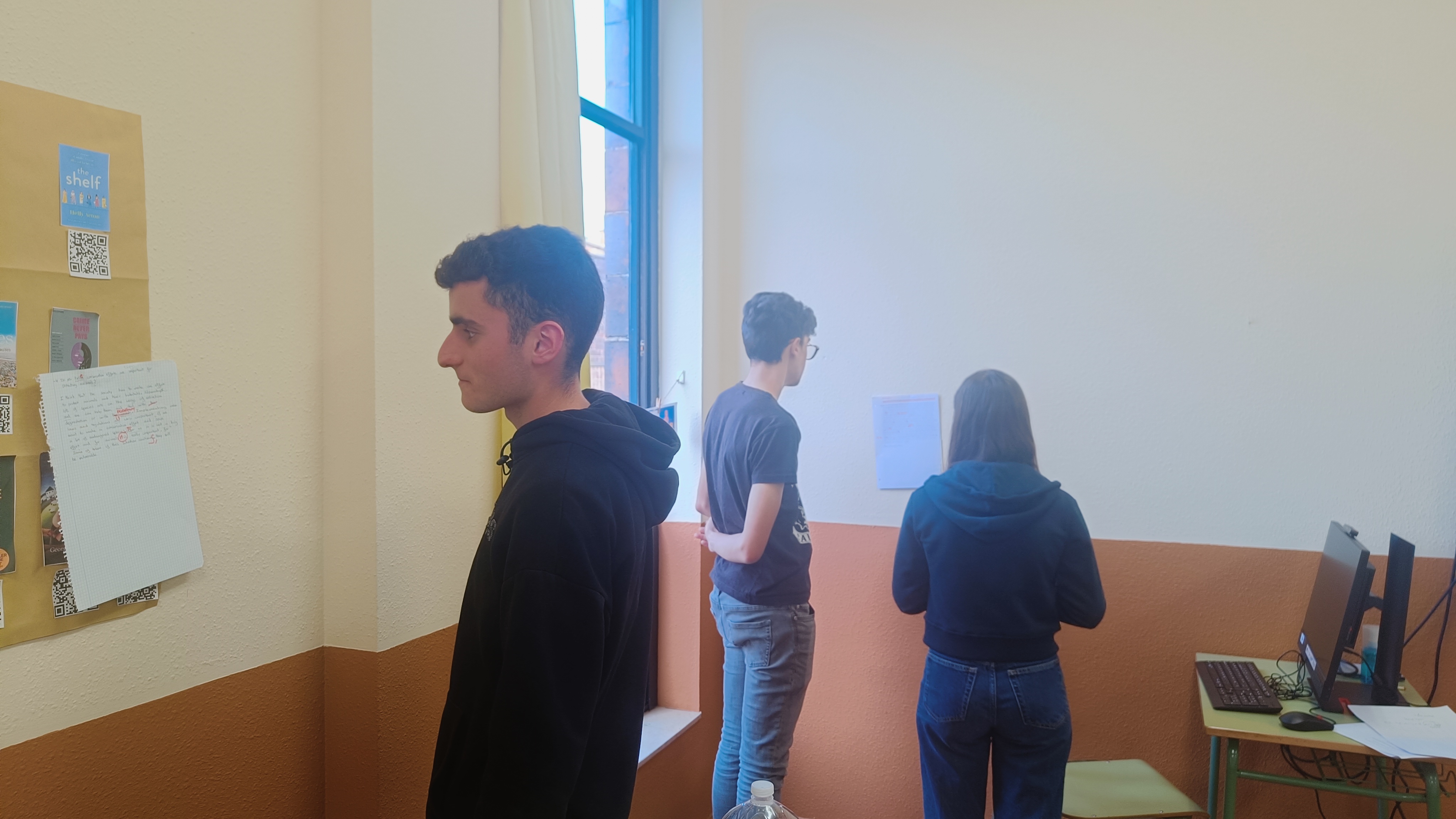This activity is simple but oh! so good! Here’s a neat idea for improving students’ writing skills with zero prep and a bit of movement. Let’s have students proofread each other’s work! They’ll learn heaps by giving and getting feedback! And yes, you also have to do something! After all, you are the teacher.
This is an activity you can do with any level. Highly adaptable. What’s not to like, then?

One of the things that worries me the most ,as the end of a course approaches, is the fear of not having dedicated enough time to a specific language skill and having favoured others. I don’t know if you feel the same way.
It’s true that I try to incorporate activities that integrate multiple language skills to ensure a holistic approach to language learning. However, I know that for some skills, it’s not enough. One of these skills is writing. It seems like there’s never enough time in class to stop and write. That’s why, many times, I assign my students the task of answering one of the questions we discuss orally in writing, usually as homework. It helps them reinforce vocabulary and, of course, ideas. And that’s only half of it. In this activity, I’ve included peer correction to encourage students to reflect not only on their own mistakes, but also their peers’.
Homework Assignment
- After discussing a set of conversation questions in class, ask students to choose one or two and, at home, write a paragraph answering the question(s). Encourage the use of a wide range of vocabulary and structures. Ask students to write on separate sheets of paper using their best handwriting.
In Class
Round 1
- Collect students’ assignments and put them up on the walls of the class (gallery style).
- Assign each pair of students, a piece of writing, ensuring it is not their own. ask them to grab a pencil.
- Students should now stand up, read their assigned piece of writing, and spot any spelling or grammar mistakes in the text. Encourage discussion about why each identified mistake is incorrect and how it could be fixed, but students cannot attempt to correct the mistake on the piece of paper, just underline it using a pencil.

Round 2.
- Give the students something to work on, like textbook exercises or an oral expression task. And now, teacher, it’s your turn to work. Correct the written exercises on the wall in this manner.
- Take a coloured pen (red, green, pink… etc )
- if students have correctly identified the mistake, put a tick.
- if students have underlined something thinking it was a mistake but it is correct, write ” it’s OK”.
- If you spot any other mistakes, correct them.
Round 3
- Students, again, stand up in their pairs and analyse the written expression that they have corrected, paying attention to the annotations made by the teacher. This will allow them to see where they have identified the error correctly, where they have made mistakes, and they will also be able to see the errors corrected by the teacher that they did not identify.
Round 4
- This is the final step. Students take the piece of writing they have corrected from the wall and find the student who has written the text, explaining the corrections made.
Let’s hope that by making them reflect on common errors, they will be able to get rid of them

Follow me on




Hi Cristina
I am also an English teacher in JHS. How can I be in touch with you?